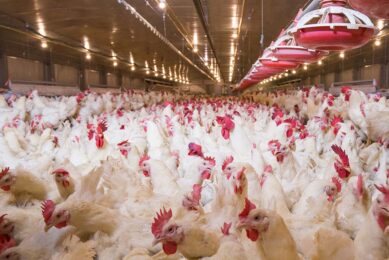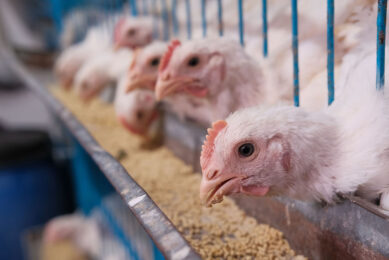Poultry manure to energy – where there’s muck there’s brass

Opportunities to reduce greenhouse gas emissions, provide eco-energy and provide income for producers were highlighted at this year’s International Egg Commission (IEC) annual conference.
Speaking to delegates at the recent IEC conference in Venice, James Corbett, Ridgeway Foods Group managing director, talked about handling of poultry litter, which for some producers represents a significant cost, while for others it is a source of additional income.
Poultry litter in the UK has a market value of between £10-15/tonne in crop available nitrogen fertiliser replacement value on average over the year, while in other countries, producers have to dry and pellet the manure before it leaves the farm.
It often has to be stored before being used or sold, and storage means that infrastructure needs to be in place and run-off needs to be captured to prevent water pollution.
Corbett questioned whether farmers were making the most of their litter. His company has successfully miniaturised and patented fluidised bed combustion for the reliable combustion of untreated poultry and layer manure to produce heat and electricity for use on-site.
He said the technology was proven over substantial operating hours and now had 14 units installed in the UK for poultry and layer farms. Operating data has been used by the EU Commission to help define new European implementing rules for using poultry manure as a fuel on poultry farms (EU Regulation 592/2014 and 1762/2017).
As well as heat, it produces a valuable organic fertiliser with high P and K levels, and Corbett said he is now developing solutions for municipal sludge, meat and bone meal and digestate from anaerobic digesters.
Challenges disposing poultry litter
Corbett said there were challenges facing producers regarding disposal of poultry litter, particularly along the River Wye on the English/Welsh border. In the past 15 years, a huge poultry expansion has been perceived to lead to a drop in water quality and has prompted the UK government to introduce a £35 million grant to producers for poultry litter combustion.
“It won’t solve the problem but at least it will give producers an option in how to manage their manure,” he said, adding, “There is an environmental solution to dispose of your pollution, those with a high cost of disposal and regulation might find this a solution that’s worth looking at – an option to generate electricity and the ash produced can be used for fertiliser which can only become more valuable and the fertiliser market matures.”
Octavio Gaspar, managing director Ovobrand, Argentina, talked about a mono-digestion project, which involves using fresh poultry manure as the only solid substrate which is mixed with its own liquid effluent.
Every day, currently 170 tonnes of poultry manure is produced and transported to fields, but the company has developed a treatment for more than 62,000 tonnes of manure annually. Manure is transported to homogenised tanks where it is mixed at the industrial plant to obtain organic calcium carbonate.
Generating energy through internal combustion
The resulting liquid is pumped into a reception tank for thermal treatment and after 22 days in anaerobic biodigesters, it is converted into methane gas and carbon dioxide. The biogas obtained is dehumidified and the sulphur removed to then generate energy through internal combustion.
The mineralised liquid from the biodigesters is filtered, separating the solid fraction, which is processed in an oven to obtain a marketable product. The liquid fraction undergoes further aerobic and anaerobic treatment to be used as biofertiliser in agricultural production fields.
Overall, this is transforming organic waste into 1.4MW of electricity and 1.2MW of thermal energy – enough to supply 3,700 homes or the entire energy expenditure of Ovobrand.
Gaspar said using mono-digestion of fresh poultry manure, the company was avoiding the need of using energy crops and will generate electricity and biofertilizers – “it is a solution with triple impact – social, environmental and economic,” he added.













